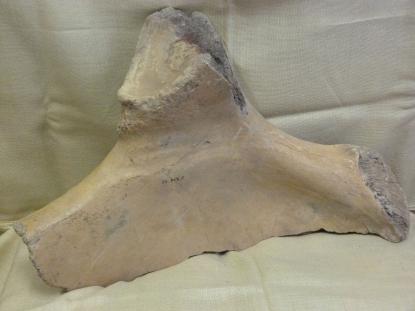2024. May 4. Saturday
Pál Kiss Museum - Tiszafüred
 |
Address: 5350, Tiszafüred Tariczky sétány 6.
Phone number: (59) 352-106
E-mail: kisspalmuz@gmail.com
Opening hours: Tue-Sat 9-12, 13-17
|
The exhibition has closed for visitors.
2013.06.04. - 2013.06.29.
Museum tickets, service costs:
|
Ticket for adults
|
500 HUF
|
/ capita
|
|
Group ticket for adults
(min. 10 people)
|
150 HUF
|
/ capita
|
|
Ticket for students
|
250 HUF
|
/ capita
|
|
Ticket for pensioners
|
250 HUF
|
/ capita
|
|
Ticket for families
(2 adults + max. 3 children)
|
750 HUF
|
/ family
|
|
Program ticket
|
300 HUF
|
/ capita
|
|
Season ticket
|
1000 HUF
|
|
|
Group guide
(max. 40 people)
|
2000 HUF
|
/ group
|
|
Photography
|
1000 HUF
|
|
|
Video
|
1000 HUF
|
We have more than thirty woolly mommoth bones in our old collection. These bones were found in the River Tisza next to Tiszafüred, when the railway-bridge had been built at the end of the 19th century, in 1890-1891. These findings belong to those huge mammals lived in the Late-Pleistocene. This mammal was the woolly mammoth.

Woolly Mammoths (scientific name Mammuthus primigenius) are extinct herbivorous mammals that had long, dense, dark black hair and underfur, long, curved tusks, a fatty hump, a long proboscis (nose), and small ears. They lived in the tundras of Asia, Europe, and North America. They lived from the Pleistocene to the early Holocene epoch (about 1,5 million – 9.000 years ago). They were about 11.5 feet (3.5 m) long, 9.5 feet (2.9 m) tall at the shoulder and weighed about 3 tons (2.75 tonnes). The tusks were used for protection, in interspecies dominance, and for digging in the snow of the ice ages for grass and other food.
The bone displayed here is a left hip bone with the measure of 70, 40 and 20 centimetres. It is well known that the hip bone is a set of three bones. The largest is the Ilium, the Pubis is the lower and the front part of the hip bone. The Ischium forms the lower and the back part of the hip bone. All these bones form the hip joint, which is a round-formed and cup-like hole for the Femur. This hool can be seen well on this hip bone.
This bone is the remian of the tundra-like conditions: tundra-boreal forest margin, or cold loess-steppe fields next to the ice sheet during the Pleistocene epoch.
Translated by Vadász, István

Woolly Mammoths (scientific name Mammuthus primigenius) are extinct herbivorous mammals that had long, dense, dark black hair and underfur, long, curved tusks, a fatty hump, a long proboscis (nose), and small ears. They lived in the tundras of Asia, Europe, and North America. They lived from the Pleistocene to the early Holocene epoch (about 1,5 million – 9.000 years ago). They were about 11.5 feet (3.5 m) long, 9.5 feet (2.9 m) tall at the shoulder and weighed about 3 tons (2.75 tonnes). The tusks were used for protection, in interspecies dominance, and for digging in the snow of the ice ages for grass and other food.
The bone displayed here is a left hip bone with the measure of 70, 40 and 20 centimetres. It is well known that the hip bone is a set of three bones. The largest is the Ilium, the Pubis is the lower and the front part of the hip bone. The Ischium forms the lower and the back part of the hip bone. All these bones form the hip joint, which is a round-formed and cup-like hole for the Femur. This hool can be seen well on this hip bone.
This bone is the remian of the tundra-like conditions: tundra-boreal forest margin, or cold loess-steppe fields next to the ice sheet during the Pleistocene epoch.
Translated by Vadász, István
